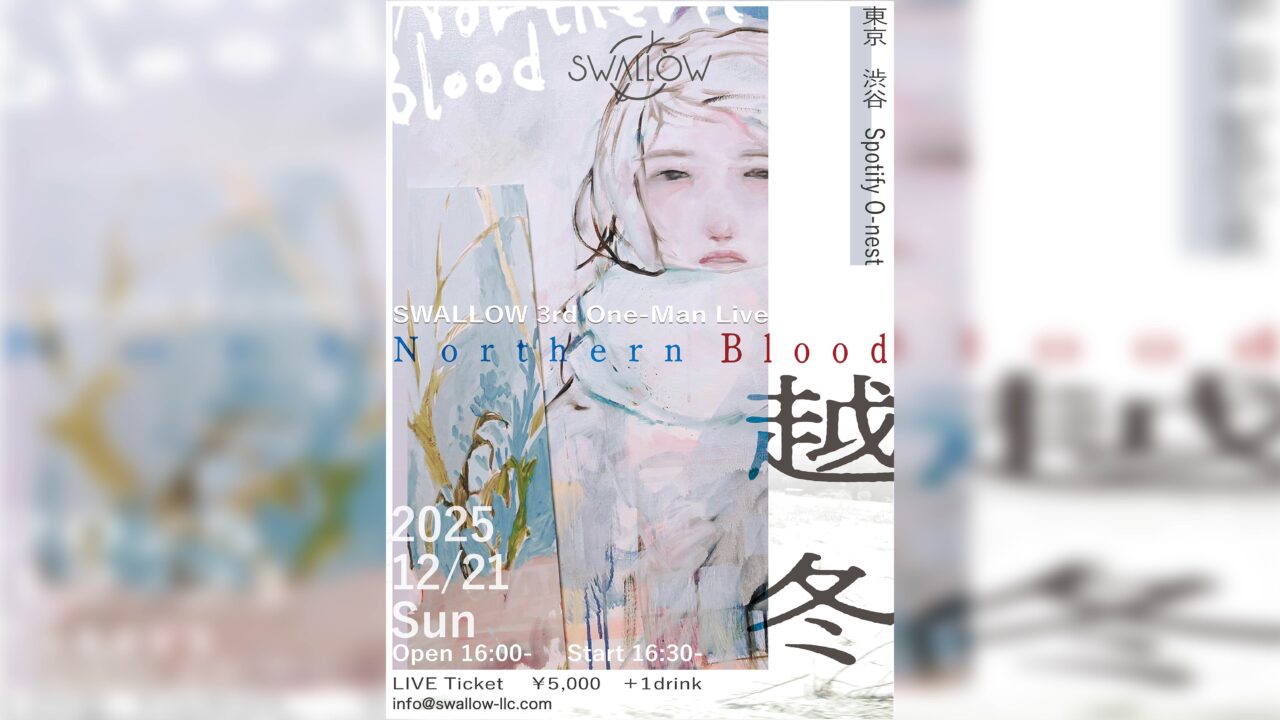When Yuta Orisaka released ‘Jumon’ in June last year, it marked a quiet yet striking shift in tone. Where 2021’s ‘Shinri’ had bristled with the raw tension of its time — a product of isolation and unease — ‘Jumon’ breathed with ease, gently unfolding moments from daily life like pages in a diary. Back then, writing for NiEW, I described the album as one through which “a gentle, pleasant breeze blows.” And indeed, the air that moves through ‘Jumon’ is a different wind altogether — softer, more domestic — than the one that cut through ‘Shinri’.
Since the release, Orisaka has taken ‘Jumon’ on the road, touring nine cities with the core four members of his band. Those performances gave shape to the album’s world, bringing its subtleties to life through careful, intimate staging.
Now, with “The Waltz of the Left Behind,” he returns for his most ambitious live performance to date. Expanding the band to an 11-piece ensemble — including the “Juusou” group and a string quartet led by Atsuko Hatano, known for her arrangements since ‘Heisei’ — Orisaka steps into new sonic territory. For the first time, the strings that have haunted his recordings take their place on stage, not as adornments, but as voices in the conversation.
This isn’t just a concert. It’s a convergence — of past sounds, present sentiments, and the promise of something just ahead, like the faint scent of a season about to change.tivities.
INDEX
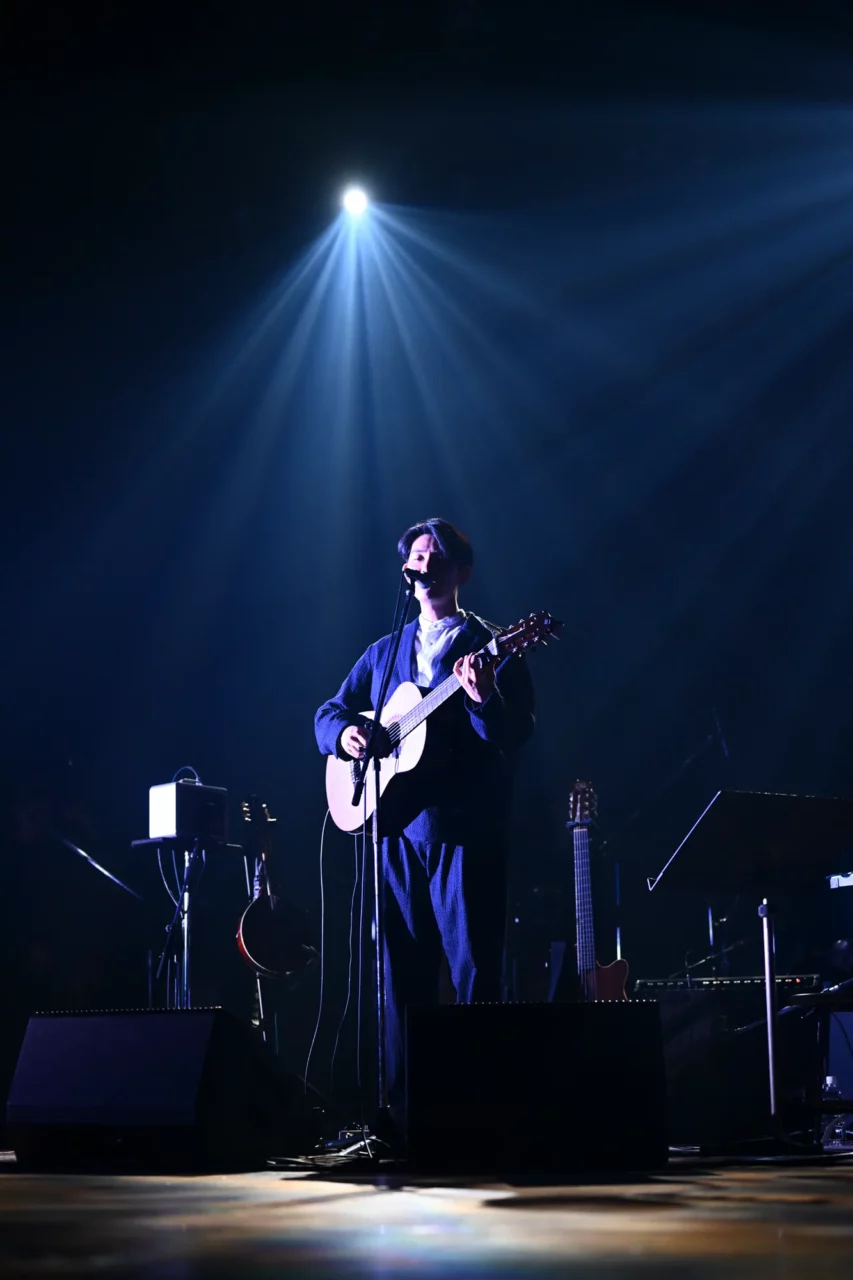
The First Set: A Delicate Dance of Quiet and Intensity
NHK Hall hummed with quiet anticipation. On stage, equipment for eleven musicians lay in readiness, a promise of the expansive sound to come. Stage right, a booth waited for the strings. Suspended above the stage were sculptural frames — like windowpanes floating midair — catching a narrow beam of white light. It looked almost like moonlight slipping through a window, hinting at the intimate world this concert was about to open.
At precisely 6:30 pm. on April 4, 2025, “The Waltz of the Left Behind” began its Tokyo performance.

The evening opened not with grandeur, but with quiet grace. “Yobina,” drawn from Orisaka’s 2018 mini-album “Zawameki,” unfolded with only his guitar and a quartet of strings. The first line — “Kimi yukite / kaze haramu” — floated into the hall, carrying the faint scent of spring.
It was followed by “Hachisu,” one of the key tracks from ‘Jumon’. This time, with yatchi at the electric piano — absent during the previous tour — the piece felt fuller, more grounded. It became clear just how essential that texture was, anchoring the song in a kind of quiet gravity.

At this moment, Orisaka slowly began to recite a poem — “The Spring Problem” by poet Seio Tsuji. “Spring has come again / I can’t remember how many springs this makes,” Tsuji’s lines intertwined with Orisaka’s music, weaving together a fresh realm of meaning that blossomed in the space between the two.

As “Hito Hito” drew to its close, the ambient hum of Hirotaka Yamauchi’s guitar filled the air, seamlessly flowing into “Akebono”, a song from Orisaka’s early days. After his latest track “Oki no Hou e”, the set continued with “Hari no Ana”, “Shachi”, “Hoshikuzu”, and “Spell”. It was in these moments that the softness of the band’s sound truly stood out. The music wasn’t quiet, but it never sought to overwhelm with sheer volume. Senoo Ricky’s drums, normally more forceful, took on a gentler touch. This allowed the subtle nuances of Azumi Miyata’s contrabass, the fluid grace of Ryotaro Miyasaka’s percussion, and the tender saxophone caress from Natsuko Hara to shine through. The vibrant string arrangements by Atsuko Hatano’s quartet added rich layers to the performance, while Orisaka’s mandolin on “Oki no Hou e” gently wove its shimmering tones into the fabric of the ensemble.
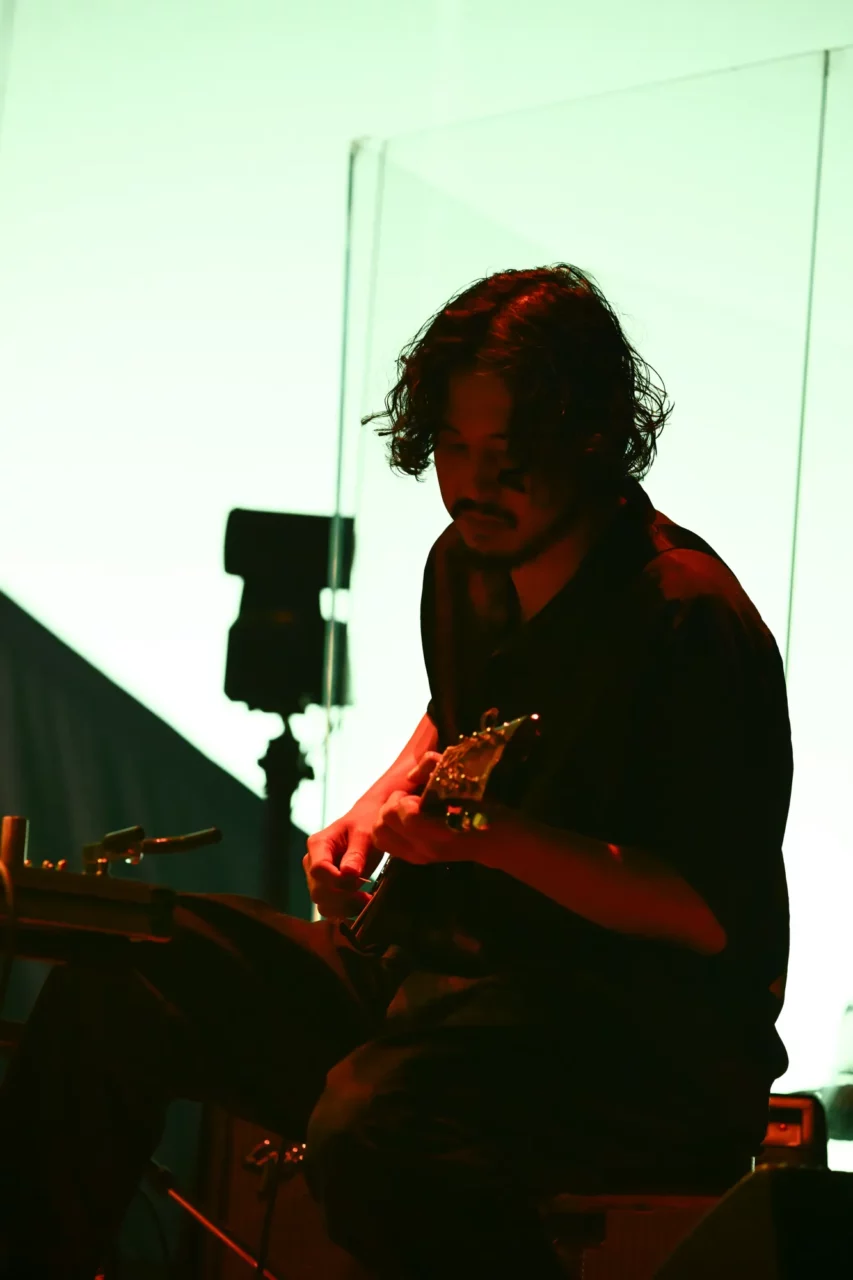

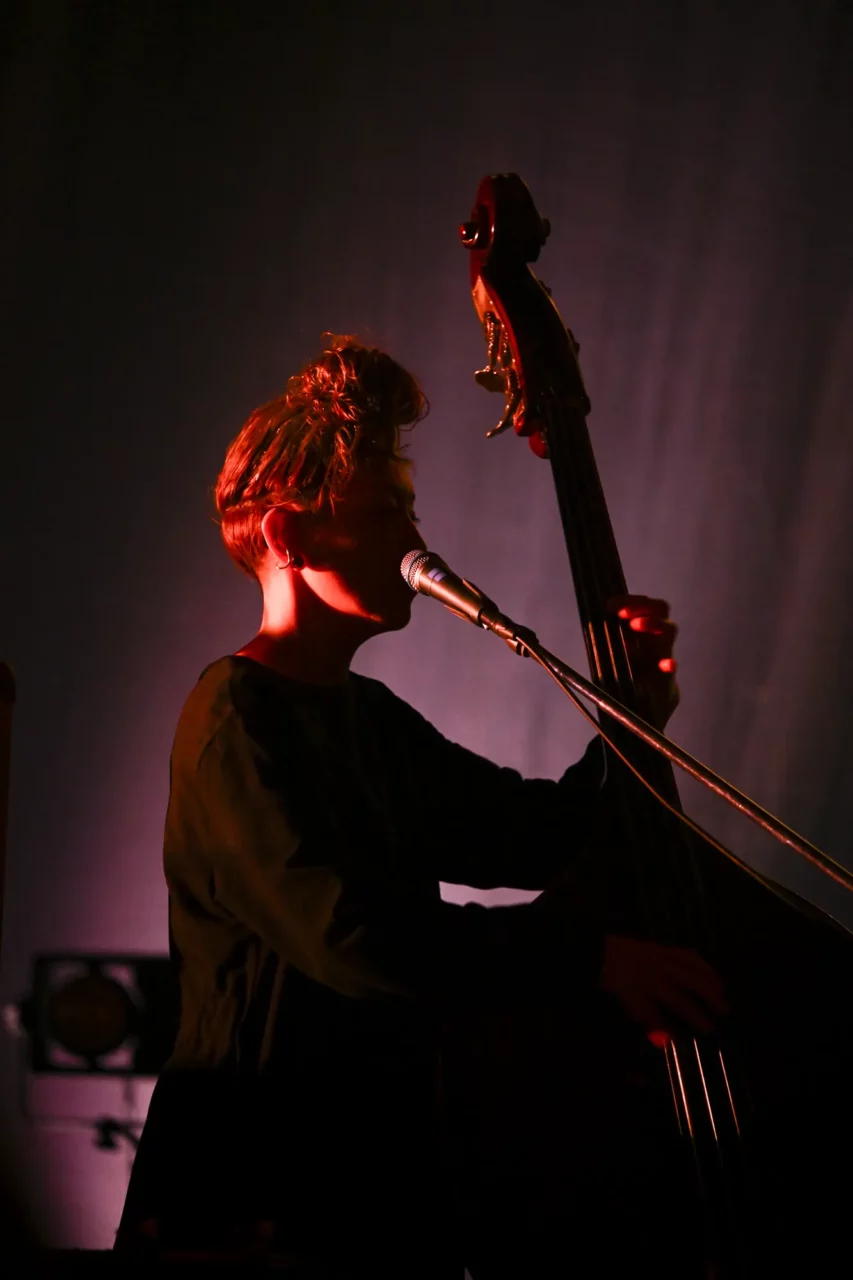

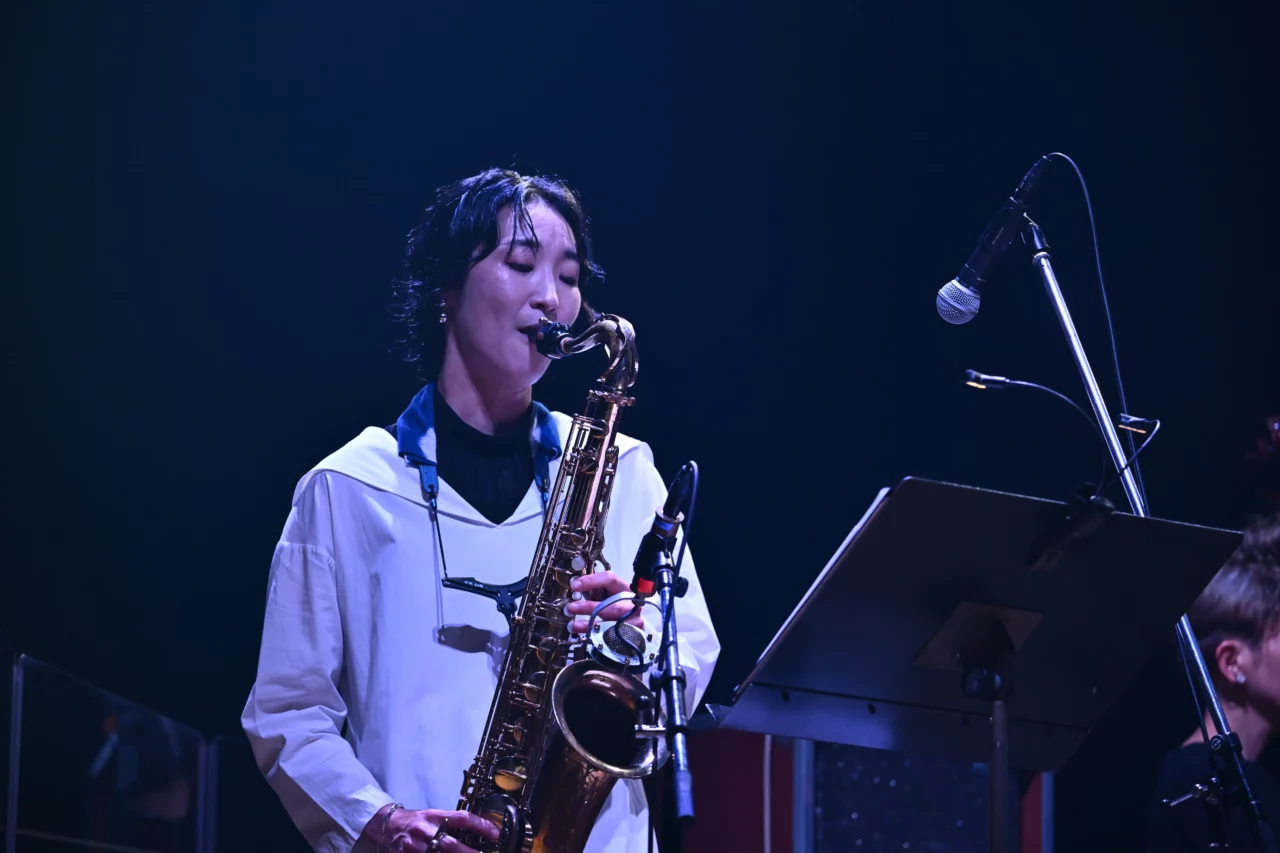

In a sharp contrast, the band’s groove erupted with “Shachi”, intensifying with a force that felt more electrifying than ever. As the song reached its peak, Orisaka let out a primal shout, “Shibuya—!”—and the crowd roared in response. Having witnessed numerous Orisaka performances, I couldn’t shake the feeling that this was the first time I had seen such a striking interplay between quiet tension and explosive movement.
With the first half concluded, a brief intermission took place. On my way to the restroom, snippets of conversation floated through the air: “There’s something different about tonight’s show.” “It feels unlike any other.” It was clear that the audience was buzzing with anticipation, eager to see what Orisaka and his band would bring to the second act.





















